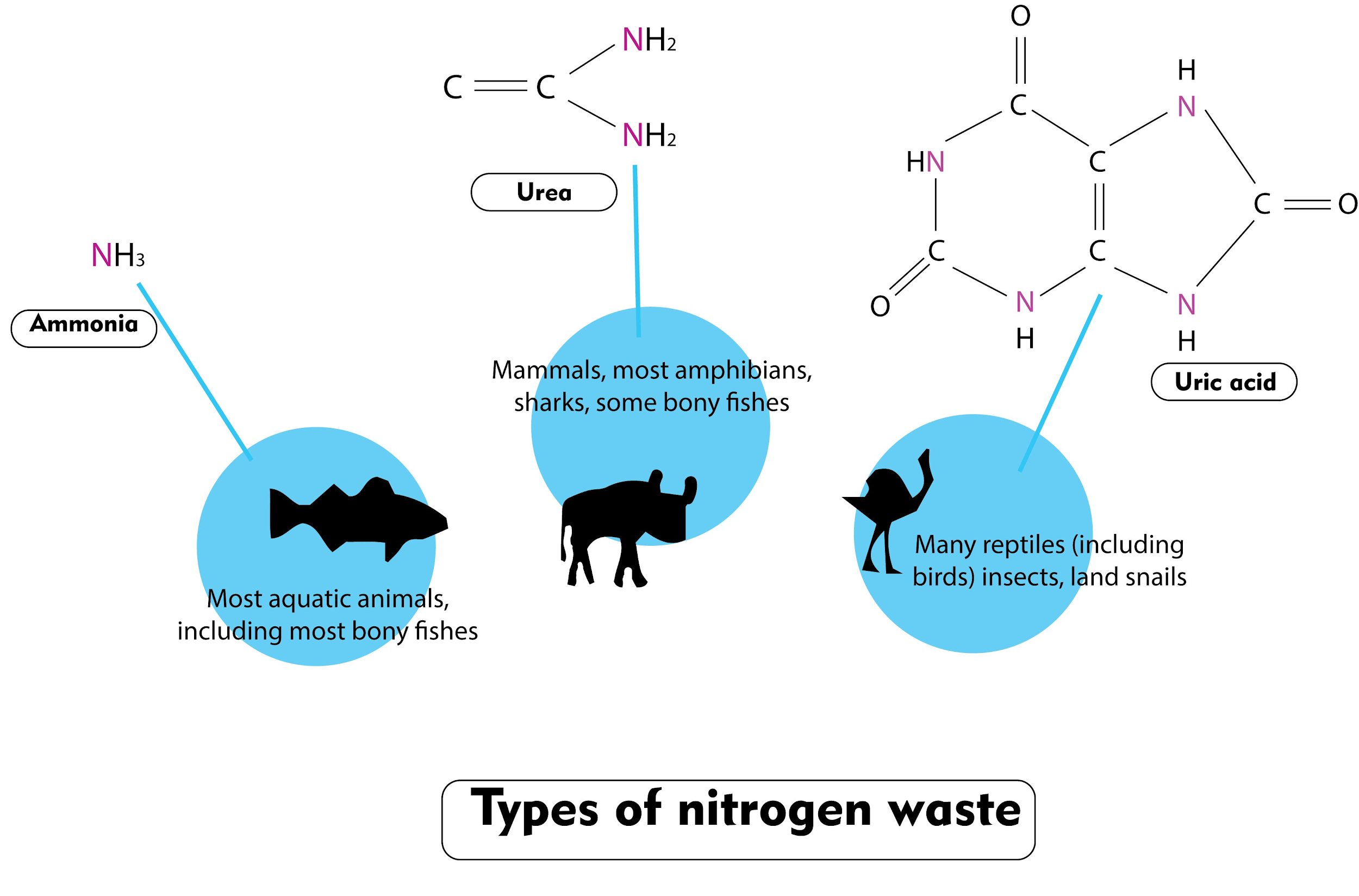
Which ones are ammonotelic animals?
(A) Amphibian and reptiles
(B) Bony fishes and amphibian tadpoles
(C) Cartilaginous and bony fishes
(D) Amphibian and mammals
Answer
480.3k+ views
Hint: Ammonia is a very toxic waste product released by the animals and it requires a large amount of water to get easily dissolved in it. Ammonia is extremely soluble in water.
Complete answer:
Organisms that excrete nitrogenous waste in the form of ammonia as a waste product are known as Ammonotelic animals. Ammonotelic organisms consist of the majority of marine animals like tadpoles of amphibians, bony fishes, protozoans, etc.
Nitrogenous waste that is produced in the body needs to be excreted from the body daily as they are toxic to an organism or animal. The organs of our excretory system help in the removal of these wastes. If these wastes are not removed, our cells or tissue will not work effectively. The waste is excreted in 3 forms i.e ammonia, uric acid, and urea.
Other than ammonotelic, two more types of animals are present on the basis of the excretory product they release. They are as follows-
- Uricotelic animals: Organisms that excrete nitrogenous waste in the form of uric acid are known as uricotelic animals. Examples are – Birds, Lizards, etc.
- Ureotelic animals: Organisms that excrete nitrogenous waste in the form of urea are known as ureotelic animals. Examples are – mammals, cartilaginous fishes, etc.

So, the correct answer is ‘(B) Bony fishes and amphibian tadpoles’.
Note: Ammonia is the most water- soluble and most toxic. Urea requires comparatively more energy and is less toxic in nature. Uric acid is the least toxic and is not easily soluble in water. However, it requires a large amount of energy.
Complete answer:
Organisms that excrete nitrogenous waste in the form of ammonia as a waste product are known as Ammonotelic animals. Ammonotelic organisms consist of the majority of marine animals like tadpoles of amphibians, bony fishes, protozoans, etc.
Nitrogenous waste that is produced in the body needs to be excreted from the body daily as they are toxic to an organism or animal. The organs of our excretory system help in the removal of these wastes. If these wastes are not removed, our cells or tissue will not work effectively. The waste is excreted in 3 forms i.e ammonia, uric acid, and urea.
Other than ammonotelic, two more types of animals are present on the basis of the excretory product they release. They are as follows-
- Uricotelic animals: Organisms that excrete nitrogenous waste in the form of uric acid are known as uricotelic animals. Examples are – Birds, Lizards, etc.
- Ureotelic animals: Organisms that excrete nitrogenous waste in the form of urea are known as ureotelic animals. Examples are – mammals, cartilaginous fishes, etc.

So, the correct answer is ‘(B) Bony fishes and amphibian tadpoles’.
Note: Ammonia is the most water- soluble and most toxic. Urea requires comparatively more energy and is less toxic in nature. Uric acid is the least toxic and is not easily soluble in water. However, it requires a large amount of energy.
Recently Updated Pages
Master Class 11 Economics: Engaging Questions & Answers for Success

Master Class 11 Business Studies: Engaging Questions & Answers for Success

Master Class 11 Accountancy: Engaging Questions & Answers for Success

The correct geometry and hybridization for XeF4 are class 11 chemistry CBSE

Water softening by Clarks process uses ACalcium bicarbonate class 11 chemistry CBSE

With reference to graphite and diamond which of the class 11 chemistry CBSE

Trending doubts
10 examples of friction in our daily life

One Metric ton is equal to kg A 10000 B 1000 C 100 class 11 physics CBSE

Difference Between Prokaryotic Cells and Eukaryotic Cells

State and prove Bernoullis theorem class 11 physics CBSE

What organs are located on the left side of your body class 11 biology CBSE

How many valence electrons does nitrogen have class 11 chemistry CBSE




